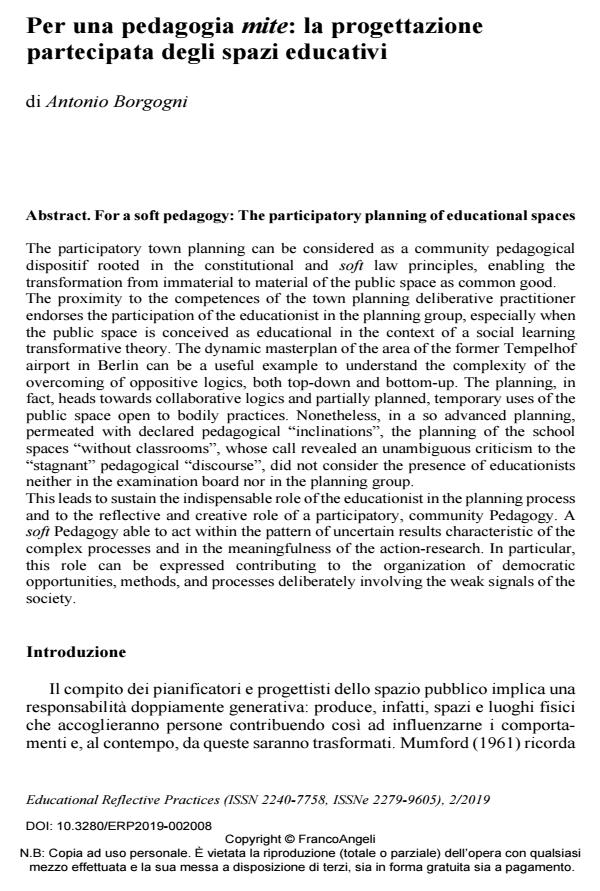Per una pedagogia mite: la progettazione partecipata degli spazi educativi
Titolo Rivista EDUCATIONAL REFLECTIVE PRACTICES
Autori/Curatori Antonio Borgogni
Anno di pubblicazione 2020 Fascicolo 2019/2
Lingua Italiano Numero pagine 12 P. 138-149 Dimensione file 196 KB
DOI 10.3280/ERP2019-002008
Il DOI è il codice a barre della proprietà intellettuale: per saperne di più
clicca qui
Qui sotto puoi vedere in anteprima la prima pagina di questo articolo.
Se questo articolo ti interessa, lo puoi acquistare (e scaricare in formato pdf) seguendo le facili indicazioni per acquistare il download credit. Acquista Download Credits per scaricare questo Articolo in formato PDF

FrancoAngeli è membro della Publishers International Linking Association, Inc (PILA)associazione indipendente e non profit per facilitare (attraverso i servizi tecnologici implementati da CrossRef.org) l’accesso degli studiosi ai contenuti digitali nelle pubblicazioni professionali e scientifiche
The participatory town planning can be considered as a community pedagogical dispositif rooted in the constitutional and soft law principles, enabling the transformation from immaterial to material of the public space as common good. The proximity to the competences of the town planning deliberative practitioner endorses the participation of the educationist in the planning group, especially when the public space is conceived as educational in the context of a social learning transformative theory. The dynamic masterplan of the area of the former Tempelhof airport in Berlin can be a useful example to understand the complexity of the overcoming of oppositive logics, both top-down and bottom-up. The planning, in fact, heads towards collaborative logics and partially planned, temporary uses of the public space open to bodily practices. Nonetheless, in a so advanced planning, permeated with declared pedagogical "inclinations", the planning of the school spaces "without classrooms", whose call revealed an unambiguous criticism to the "stagnant" pedagogical "discourse", did not consider the presence of educationists neither in the examination board nor in the planning group. This leads to sustain the indispensable role of the educationist in the planning process and to the reflective and creative role of a participatory, community Pedagogy. A soft Pedagogy able to act within the pattern of uncertain results characteristic of the complex processes and in the meaningfulness of the action-research. In particular, this role can be expressed contributing to the organization of democratic opportunities, methods, and processes deliberately involving the weak signals of the society.
Antonio Borgogni, Per una pedagogia mite: la progettazione partecipata degli spazi educativi in "EDUCATIONAL REFLECTIVE PRACTICES" 2/2019, pp 138-149, DOI: 10.3280/ERP2019-002008